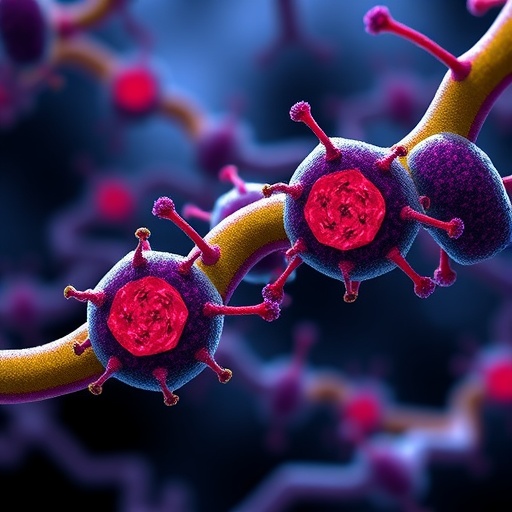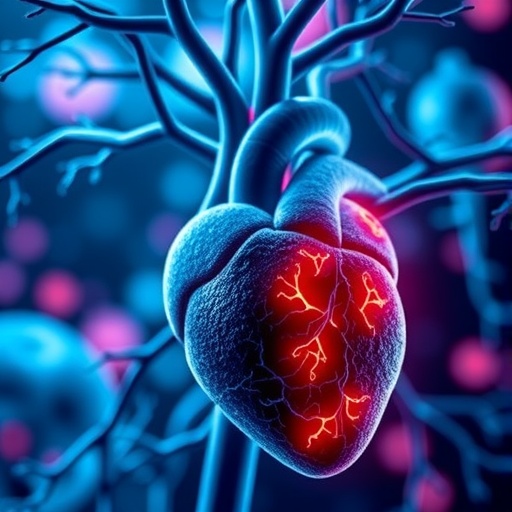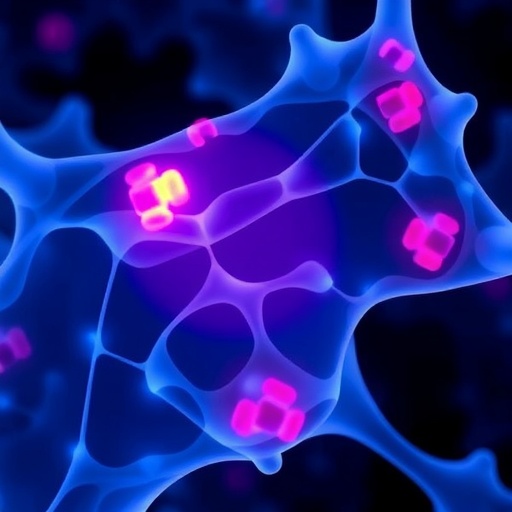In a groundbreaking development that could revolutionize colorectal cancer (CRC) treatment, researchers have uncovered a pivotal mechanism underlying cancer stemness and drug resistance. The study, spearheaded by Lee, Park, Han, and their colleagues, unveils the critical role of HUWE1, an E3 ubiquitin ligase, whose loss alters the dynamics of the β-catenin destruction complex, thereby promoting tumor aggressiveness and therapeutic evasion in colorectal cancer cells. This discovery offers an essential breakthrough for the oncology research community striving to combat CRC relapse and resistance to conventional therapies.
Colorectal cancer remains a formidable challenge in global health, ranking among the top causes of cancer-related mortality worldwide. Despite advances in early detection and treatment, a subset of CRC patients still experience relapse, often linked to the persistence of cancer stem cells that evade standard chemotherapy. The molecular underpinnings of this phenomenon have been elusive. The present research rigorously investigated the role of HUWE1, detailing how its deficiency disrupts the finely tuned degradation system of β-catenin, a central player in the canonical Wnt signaling pathway.
The Wnt/β-catenin pathway has long been recognized as a key regulator of cellular proliferation and differentiation, but its deregulation is a hallmark of many cancers, predominantly CRC. β-catenin stability within cells is governed by a multi-protein destruction complex, which tags it for proteasomal degradation—preserving homeostasis. However, mutations or alterations in this complex often lead to β-catenin accumulation in the nucleus, where it triggers oncogenic transcription. The study illuminates how HUWE1 loss exacerbates this situation, triggering aberrant β-catenin stabilization independent of the typical mutational events that overdub Wnt signaling.
By employing state-of-the-art genomic editing tools like CRISPR-Cas9, the research team selectively knocked out HUWE1 in colorectal cancer cell lines. They observed a marked increase in nuclear β-catenin levels, which consequently enhanced the expression of genes associated with stemness and survival pathways. These findings were corroborated by transcriptomic analyses that reflected the activation of stem cell–like gene signatures—attributes closely linked with the notorious chemotherapy-resistant CRC phenotype.
Moreover, HUWE1-deficient cells displayed pronounced resistance to standard chemotherapeutic agents such as oxaliplatin and 5-fluorouracil, which are frontline drugs in CRC treatment regimens. This pharmacological resilience poses a significant clinical dilemma, as it leads to treatment failure and disease progression. Crucially, reconstitution of HUWE1 function reinstated β-catenin degradation and sensitized cancer cells to chemotherapy, underscoring the therapeutic potential of targeting HUWE1 pathways.
At the molecular level, the study elucidates that HUWE1 mediates ubiquitination of specific components of the β-catenin destruction complex, promoting their stability and function. Loss of HUWE1 disrupts this regulatory cascade, rendering the destruction complex ineffective and allowing β-catenin to escape proteasomal degradation. This mechanistic insight bridges fundamental knowledge gaps about how non-genetic factors contribute to Wnt pathway dysregulation in CRC.
Clinical samples analyzed from CRC patients further validated these lab-based findings. Tumors with low HUWE1 expression exhibited increased β-catenin activity and higher expression of stemness markers such as LGR5 and CD44. Importantly, these patient-derived tumors were associated with poorer prognosis and decreased responsiveness to chemotherapeutic protocols, reflecting the in vitro resistance patterns uncovered in the experimental setting.
Emerging from these discoveries is a compelling argument for the development of novel therapeutic strategies aimed at restoring HUWE1 function or compensating for its loss. Molecular inhibitors that can destabilize β-catenin or reactivate the destruction complex hold promise as adjunct therapies. Such approaches may thwart stemness acquisition and overcome drug resistance, ultimately improving patient survival in CRC.
The comprehensive nature of this study paves the way for refined biomarker development. HUWE1 expression or its downstream effectors could serve as predictive indicators for CRC treatment responses. This would enable a precision medicine approach where patient stratification guides therapeutic choices, optimizing efficacy and minimizing unnecessary exposure to ineffective drugs.
Beyond CRC, the implications of HUWE1 in cancer biology may extend to other malignancies where Wnt signaling plays a crucial role. Understanding the ubiquitin-mediated control of key signaling complexes could unlock new avenues to target elusive cancer stem cells across diverse tumor types. This integrative view challenges researchers to consider the broader spectrum of ubiquitin ligases as gatekeepers of cellular fate and therapy resistance.
Importantly, the study also raises questions about the interplay between genetic mutations and post-translational modifications in cancer pathogenesis. While mutational drivers in CRC are well-characterized, this work spotlights how non-mutational regulatory layers like ubiquitination significantly influence tumor behavior. This paradigm shift could revolutionize how oncologists conceptualize tumor evolution and drug resistance.
One of the study’s strengths is its multi-model approach, combining in vitro studies, patient-derived organoids, and in vivo xenograft models, enhancing the robustness and translational relevance of the findings. The investigators meticulously illustrated how HUWE1 ablation phenocopies clinical resistance scenarios, which brings preclinical results closer to clinical application.
Future research directions emerging from this work include exploring the synergy between HUWE1-targeted therapies and immune modulation. Given the emerging role of Wnt signaling in shaping the tumor microenvironment, it is conceivable that correcting β-catenin dysregulation could sensitize tumors to immune checkpoint blockade, a rapidly evolving realm in cancer treatment.
In conclusion, the study by Lee et al. constitutes a landmark contribution to our understanding of colorectal cancer biology. By dissecting the consequences of HUWE1 loss on β-catenin regulation and stemness, they provide a novel mechanistic framework explaining drug resistance and tumor aggressiveness. These insights herald new opportunities for therapeutic intervention aimed at eradicating cancer stem cells, overcoming resistance, and ultimately improving outcomes for CRC patients worldwide.
This revelation invites the cancer research community to intensify efforts to develop HUWE1-based diagnostics and therapeutics, promising a future where colorectal cancer’s most insidious traits could be effectively neutralized. As the field awaits translation of these findings into clinical trials, the hope for more durable and targeted CRC treatments has never been stronger.
Subject of Research: The role of HUWE1 loss in colorectal cancer stemness and drug resistance through dysregulation of the β-catenin destruction complex.
Article Title: HUWE1 loss promotes stemness and drug resistance in CRC with dysregulated β-catenin destruction complex.
Article References:
Lee, C., Park, SH., Han, IO. et al. HUWE1 loss promotes stemness and drug resistance in CRC with dysregulated β-catenin destruction complex. Cell Death Discov. 11, 424 (2025). https://doi.org/10.1038/s41420-025-02731-2
Image Credits: AI Generated
DOI: https://doi.org/10.1038/s41420-025-02731-2
Tags: cancer stemness and drug resistancecolorectal cancer mortality challengescolorectal cancer treatment breakthroughsE3 ubiquitin ligase in CRCHUWE1 loss in colorectal cancermolecular mechanisms of CRConcology research advancementspersistent cancer stem cellstherapeutic evasion in cancertumor aggressiveness and cancer relapseWnt signaling pathway in CRCβ-catenin destruction complex





